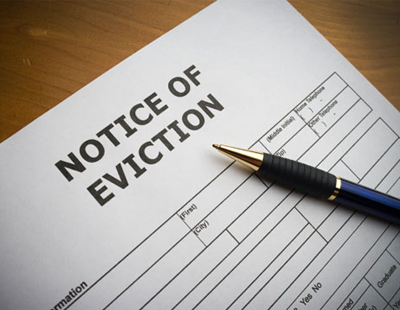Proposals by the main political parties, including the Tory government, to scrap Section 21 notices to evict tenants could potentially pave the way for the mass exodus of landlords from the private rented sector in the coming years.
According to the National Landlords Association (NLA), abolishing Section 21 evictions could lead to the private renting section shrinking by as much as 20%, with up to 960,000 fewer homes available to renters if landlords pull out of the market.
But while the legislation still exists, landlords still need to be aware of how to manage the section 21 process and ensure rules are being followed.
To help landlords, Paula Haverkemp, a paralegal at East Midlands-based law firm Nelsons’ property disputes team, shares her advice and tips for landlords on how to manage a section 21 process.
What is a section 21?
“A section 21 notice/form 6A is a no-fault notice that enables landlords to evict tenants who have entered into an assured shorthold tenancy (AST) agreement without a reason. Before issuing a section 21 notice, a landlord must ensure they have complied with the requirements as defined in the Deregulation Act 2015.”
When would a section 21 notice be used?
“If a tenant does not vacate the property at the end of the fixed-term, the only way a landlord can evict a tenant lawfully is to serve a section 21 notice upon them.
“This also applies if the tenant remains in occupation at the end of the fixed-term and the AST becomes a statutory periodic tenancy (SPT). This means the tenancy runs on exactly the same terms as defined in the expired AST on a month by month basis.
“The section 21 notice can be served during the fixed-term but only once the tenant has been in occupation of the property for four months. However, as section 21 notices now have a shelf life of six months from the date the notice is signed, a landlord will need to pay particular attention to the date they serve the notice – especially if the AST is for a fixed-term of 12 months.
“If a tenant is not in breach of their AST or SPT, the only way a landlord can evict them lawfully is to serve a section 21 notice upon them.”
How long will the process take?
“The section 21 notice is a two-month notice. If the tenant does not vacate in accordance with the notice, the only way a landlord can obtain vacant possession of their property lawfully is to obtain an order for possession through the court. This process usually takes approximately two to three months to obtain, depending on how busy the court is.”
What changes are the government planning to make?
“The government is proposing to remove the AST from the Housing Act 1988 meaning that these types of tenancies would only be available to private landlords. We may also see the government introduce fixed-term assured tenancies, which would commit the tenant and landlord to a specific time period. This would mean a fixed-term tenancy could be renewed or become an assured periodic tenancy if not ended by tenant or landlord.”
What happens if the law changes?
“The proposed changes to legislation are currently being consulted on and will then need to be progressed through parliament before they come into play. However, it is unlikely any changes will take place before late 2020.
“Regarding ASTs, the government has also confirmed the changes will not affect any pre-existing tenancy agreements. The landlord will still need to go through a section 21 process when the tenancy ends.”
Want to comment on this story? Our focus is on providing a platform for you to share your insights and views and we welcome contributions.
If any post is considered to victimise, harass, degrade or intimidate an individual or group of individuals, then the post may be deleted and the individual immediately banned from posting in future.
Please help us by reporting comments you consider to be unduly offensive so we can review and take action if necessary. Thank you.















.png)






Join the conversation
Be the first to comment (please use the comment box below)
Please login to comment